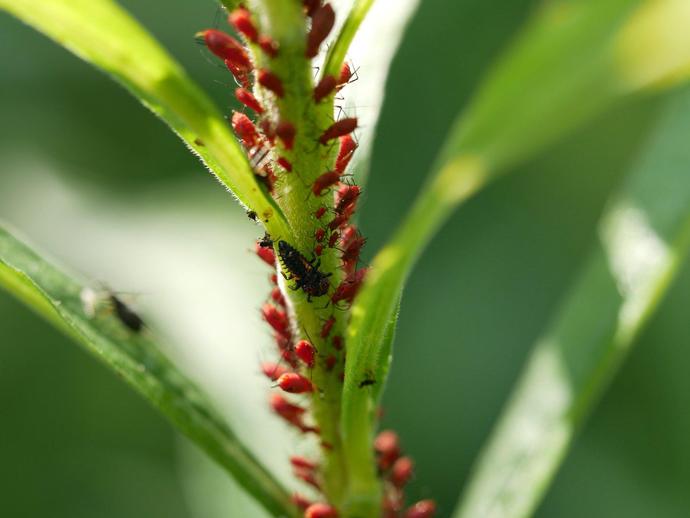May 15, 2020
Welcome to the exciting conclusion to yesterday's nature post about ladybeetle larva! If you missed that post, be sure to scroll down and check it out.
If you look in the center of this photo, you'll see an Asian multicolored ladybeetle larva (Harmonia axyridis). The little red things are aphids, which are small insects that suck the sap from plants. If you have even a passing interest in gardening, you probably have no love for aphids. They're massive agricultural pests, they spread quickly, and it's all but impossible to eradicate every single one.
And that is why the Asian multicolored ladybeetle was introduced into the U.S. Ladybugs may look cute, but even in their larval form, they're voracious predators of aphids, not to mention mites, scale insects, and white flies; basically, if there's an insect you don't want in your garden, ladybugs will enjoy eating it.
Asian multicolored ladybeetles were first introduced into the U.S. back in 1916, but their population didn't really start to explode until the late 1980s. They have proven to be an effective control on aphids, but like any invasive species, there are drawbacks. For one, the adults are pests that come inside homes to overwinter. When startled or crushed, they release a foul-smelling fluid that leaves stains. They have also caused the populations of our native ladybug species to decline. To add insult to injury, vineyards often accidentally collect these beetles when they're harvesting their grapes, which causes the wine to taste funny.
While introducing species to places outside of their native range can have short-term benefits, history shows us time and time again that there are always unforeseen consequences. #BenInNature
NEW! If you discover something in nature that you would like help identifying, be sure to message us right here on Facebook with a picture and we'll have our experts help you identify it!
About this post: Social distancing can be difficult, but the next few weeks present a great opportunity to become reacquainted with nature. While he is working from home, Administrator of Science Ben Williams is venturing outdoors each day to record a snapshot of the unique sights that can be found in the natural world.
This post brought to you by VMNH Corporate Supporter Everything Outdoors, LLC.

 Hours & Admissions
Hours & Admissions Directions
Directions

